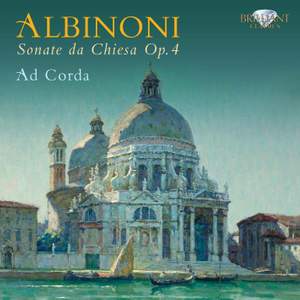The Venetian late Baroque composer Tomaso Albinoni had a long career in the theatre, and his prolific output included fifty-three operas. However, these stage works were lost and are now largely forgotten, and he is remembered chiefly for his concertos. The Sonate da Chiesa or ‘church’ sonatas, were four-movement concertos and fairly solemn in nature as they were written to be performed in church. However, Albinoni’s Sonate da Chiesa are less traditional, incorporating a range of dance forms, and displaying his elegant style and considerable melodic talents to great effect. The slow movements, such as the Adagio of Op.4 No.6 are particularly appealing. Albinoni’s lyrical ‘church sonatas’ are not what they seem though.
There are two works by the composer which are assigned ‘Op.4’: the Cantate a voce sola, and the Sonate da Chiesa. The latter, or ‘second’ Op.4, were not originally put together by Albinoni himself but collected under that opus number, by the French publisher Éstienne Roger, who borrowed it from the Cantate a voce sola, which he didn’t intend to republish. The Sonate da Chiesa was widely circulated in Europe, and achieved far greater success than the Cantate a voce sola. However, the commercially-minded Roger had a growing number of customers, and needed to keep the flow of new publications going at low cost. This led him to put together unauthorised collections, including this set of Sonate da Chiesa. In fact it contained inauthentic material, possibly by other composers. The authorship of the third sonata in particular is debated by music scholars. Albinoni’s Sonate da Chiesa are performed on this recording by Baroque expert Luca Scandali (organ and harpsichord) and early music specialists Alessandro Ciccolini (violin), Alberto Guerrero (cello), Maurizio Piantelli (theorbo), Miguel Rincón (archlute) and Francesco Baroni (harpsichord).





